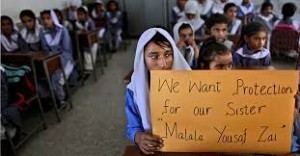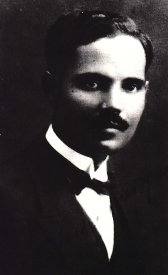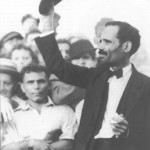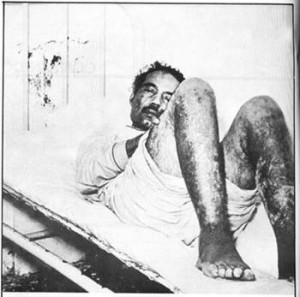By Clark Baxter
American national civic life is in disarray. The legislative branch of the United States government has voted several times to expel its leader, and any bill that finds its way to the President’s desk is widely regarded as the work of a profile in courage by the current speaker. American national dysfunction of this kind and to this degree has never happened before—even during the run-up to America’s Civil War 163 years ago.
But while the United States has gradually lost the ability to govern its national affairs in an orderly way over the past 25 years or more, local governments and communities—in every region, representing every political orientation of the country—have carried on, and many have prospered.
What and who has made this possible? The answer is local leaders—best referred to as “everyday heroes.”
 The journalist James Fallows and his wife Deborah have spent years visiting these functioning communities and reporting the civic engagement that has transformed regions, cities, and even neighborhoods that spark the kind of positive civic activity that eludes our national leadership. The Fallows have collected the stories of several of these community transformations in a book called Our Towns.
The journalist James Fallows and his wife Deborah have spent years visiting these functioning communities and reporting the civic engagement that has transformed regions, cities, and even neighborhoods that spark the kind of positive civic activity that eludes our national leadership. The Fallows have collected the stories of several of these community transformations in a book called Our Towns.
As James explains it, “we wanted to look at parts of the country generally missed by the media spotlight. This would mean reporting in places often considered ‘flyover country’—small to medium size cities and rural areas that capture media attention only after a national disaster. We looked for places that faced adversity of some sort and that looked for ways to respond.”
In other words, to borrow from Joseph Campbell, Fallows went to places that needed a local “hero” to reimagine what the community might become, to lead the transition, and to inspire other to follow.
What follows is a brief overview of three communities that Fallows visited, a word about an undertaking that helped transformed them, and the local heroes whose imagination, charisma, and determination made this transformation possible. In the words of the poet Christopher Smart these transformations were, thanks to everyday heroes, “Determined, Dared, and Done.”
You will notice that none of these stories involves the military or sports—settings in which we’re most used to hear stories of heroes and heroic activity. Instead, the three stories I will briefly summarize involve how the vision of local “heroes” helped bring to life a revitalization of their community through efforts in commerce, education, and the arts.
First Stop: Pittsburgh, Pennsylvania
Pittsburgh has already gone through a significant transformation from the manufacture of steel into a center for education, health care, and technology. But the population is half of what it was two generations ago and as in many cities, certain neighborhoods were left behind in the prosperity that followed this transformation.
In 2003 Henry Reese and his wife, the artist Diane Samuels, established something called “the City of Asylum,” intended as a sanctuary for exiled writers. They bought a former crack house, fixed it up, and invited Huang Xiang, an exiled Chinese writer and dissident who spent years in a Chinese labor camp, to accept a two year residence as the first “writer in exile.”
Over time Reese and Samuels bought an adjacent row of townhouses—which Huang Xiang and others have covered with art and calligraphy—and writers from 9 other countries have followed, each for a two-year residency.
This act of compassion for exiled writers has led to a “jazz poetry” month and a participatory art installation called “a river of words.” In turn, these things have brought this neighborhood of crack houses and other signs of urban despair back to life. New restaurants, a public garden, and a dynamic street life have transformed The City of Asylum, formerly an urban ghetto, into one of Pittsburg’s most visited attractions.
Next Stop: Greenville, South Carolina
As many of you know, South Carolina is, to say the least, politically conservative and its growth has depended on the appeal of an anti-union culture that has attracted several large companies—including most of New England textile industry—to relocate to SC and especially to Greenville.
But, as Fallows heard from many local leaders, when outsiders were and still are approached about moving to Greenville to start a new business they most often respond (and here I’m quoting a local business leader) “Greenville? You’ve got to be kidding?”
Greenville needed a re-boot.
One of the objections behind “Greenville? You’ve got to be kidding!” was what outsiders imagined was absence of first-rate schools for their children. So two local educators got to work.
In 1980 Virginia Uldrick, a local musician, teacher, and according to Fallows ”a force of nature,” founded a summer program that, over time, became The Governor’s School for the Arts, a public (underline public) boarding school (underline public boarding school) for  art, music, writing and other expressive arts. In time, the city of Greenville donated an 8 acre landscaped campus and $27 million in seed money. The school opened full time to high school juniors and seniors in 1999
art, music, writing and other expressive arts. In time, the city of Greenville donated an 8 acre landscaped campus and $27 million in seed money. The school opened full time to high school juniors and seniors in 1999
The Governor’s School attracts students from all over South Carolina. About a third qualify for free lunch and pay modest fees as they are able. Many come from Columbia or Greenville; others from small towns that the kids who grew up there themselves describe as “the third bend in the river.”
By the metrics, “The Gov,” as students call it, has proven itself: National Merit finalists, Presidential Scholars in the Arts recipients, and, as of the publication of Fallows’s book, 100% acceptance to such premier colleges and professional schools as Juilliard and The Rhode Island School of Design.
In addition, the success “The Gov” led to the formation of another innovative place—the AJ Whittenberg Elementary School…of Engineering. Let me repeat that—an elementary school for engineering—a product of the imagination and drive of Phinnize J. Fisher, a local teacher.
When Whittenberg was preparing to open, in 2010, few people had heard of it and applications were spotty. A year later, local high school kids were hired to canvas Greenville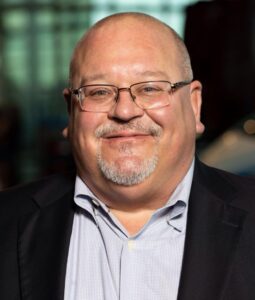 neighborhoods. And as word got out applications spiked. Once parents learned about “The Gov” interest became so strong that the local Lowe’s home store offered discounts on camping gear for parents who camped out on the campus waiting for a chance to place their kids on the wait list.
neighborhoods. And as word got out applications spiked. Once parents learned about “The Gov” interest became so strong that the local Lowe’s home store offered discounts on camping gear for parents who camped out on the campus waiting for a chance to place their kids on the wait list.
Whittenberg’s applied science orientation is a perfect fit for Greenville’s business climate: parents working at local GM, BMW, MIchelin, Duke Energy, Lockheed Martin and other engineering companies were eager to enroll their kids in a school where 1st graders explored the physics of hoisting in the air the Wicked Witch of the West at the school’s production of The Wizard of Oz; 2nd graders do their school work on their personal iPad, and older kids join a nationally ranked robotics team that was headed to Germany to compete internationally.
SIdebar—the Google page of the Whittenberg Schoool does not list a “founder.”And when I called the school to see if they could name a founder or two the woman I spoke with suggested that Margaret Thompson, the school’s first principal, was “heavily involved.”
Google does not include an entry for Margaret Thompson, making her a true and unsung local hero
When kids graduate from Whittenberg, many move on to the Phinnize J. Fischer Middle School, which recently opened with a STEAM curriculum—STEM with an additional “A” for “Arts.” As Fallows reports, “part of the push to STEAM came from the local business community, which wanted to nurture a workforce steeped in technology and practiced in the softer skill of communicating, teamwork, organizing, and public speaking.”
Fallows does not mention specifically how and how much the local business environment has benefited from these innovative schools. But the growth of Greenville by 21% just since 2010 suggests that families are moving here in droves; and it isn’t a stretch to suggest that innovative schools like these have addressed the “Greenville? You’ve got to be kidding” problem head on.
Next Stop: Columbus, Mississippi
A generation ago the socio-cultural climate of Columbus was generally similar to that of Greenville—only worse. Mississippi ranks at or near the bottom of any economic ranking of the 50 states. At the time of Fallows’s visit, the median household income of the families in the US was a little over $50,000. It was about $37,000 in Mississippi and closer to $30,000 in the Greenville area.
The region needed jobs.
Introducing Joe Max Higgins, the co-founder of the Golden Triangle Development Link, a non-profit that has attracted capital to improve the airport and other infrastructure. These improvements have in turn attracted such companies as Eurocopter, the Golden Triangle’s first major success.
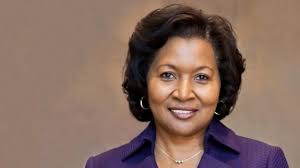 In the words of Mr. Higgins, a born and bred southerner, “Eurocopter was a really big deal. In a county and state where most people think that women are all barefoot and pregnant—and we’re all members of the Klan—we’re now making shit that flies!!”
In the words of Mr. Higgins, a born and bred southerner, “Eurocopter was a really big deal. In a county and state where most people think that women are all barefoot and pregnant—and we’re all members of the Klan—we’re now making shit that flies!!”
Other companies followed, but—as with Greenville, only after Columbus turned to initiative #2: improving and even creating local schools—like The Mississippi School for Math and Science .
Time prevents my detailing everything that makes this high school special, but picture a classroom with an 8 foot grandfather clock in the corner—that a student made himself out of brightly colored plastic pieces. A lab in which students programmed a robot to conduct search and rescue missions. Or a humanities class in which high school students—most of them preparing for a career in science or engineering—read a short story set in India and discussed whether a person’s immigrant status accelerated their self discovery.
As Fallows notes: “Abso-stinking-ikely” was one hearty response that pretty much revealed the energy and engagement of the class.
And a sidebar: The persons who founded the schools were by any definition local heroes. But observe another hero—the teacher in Mississippi—in a school ostensibly focusing on math and science—who got his kids excited about a story set in India. That’s a hero too.
Fallows goes on to report that “many alumni of MSMS have already reached their dreams of of becoming doctors, engineers, veterinarians, and academics. One of the grads he met was headed to Harvey Mudd College, a top engineering school in California. But after that he plans to return to Mississippi to start his pwn engineering company. The rising generation of well-educated Mississippians intending to start a local business—mission accomplished.
James and Deborah Fallows dropped in on and wrote about 29 cities. Other journalists, including Judy Woodruff on the PBS NewsHour, have done the same. It remains only to ask about the obstacles these local heroes encountered. Every hero faced difficulties raising money and marshaling the attention of Covid leaders. But the main obstacle they stared down and overcame was not outright resistance… but indifference.
Obstacles, whether a lack of money or an impossible physical barrier can be overcome with tactics, energy, and skill—as witness Columbus’s voyage across the un-crossable Atlantic and NASA’s sending a man to the unreachable moon.
But indifference is harder to overcome. If, as Joseph Campbell, had suggested the usual hero adventure begins with someone “who feels there’s something lacking in the normal experiences of his society,” it seems axiomatic that the the more generations of people who say “I like things as they are,” the harder will be the journey to replace the inadequate present world with the better one the hero alone sees.
The Bible teaches that “the poor you shall always have with you. To which some heroes in America’s Bible Belt and elsewhere, respond “Let’s see if we can fix that.
Local heroes have lived among us for millennia—as witness the 44th chapter of the apocryphal book of Ecclestiasticus, which opens as follows:
Let us now praise famous men, and our fathers that begat us. The Lord hath wrought great glory by them through his great power from the beginning. Such as did bear rule in their kingdoms, men renowned for their power, giving counsel by their understanding, and declaring prophecies: Leaders of the people by their counsels, and by their knowledge of learning meet for the people, wise and eloquent are their instructions:
Such as found out musical tunes, and recited verses in writing:
Rich men furnished with ability, living peaceably in their habitations:
All these were honoured in their generations, and were the glory of their times.
There be of them, that have left a name behind them, that their praises might be reported. And some there be, which have no memorial; who are perished, as though they had never been; and are become as though they had never been born; and their children after them. But these were merciful men, whose righteousness hath not been forgotten. With their seed shall continually remain a good inheritance, and their children are within the covenant. Their seed standeth fast, and their children for their sakes. Their seed shall remain for ever, and their glory shall not be blotted out. Their bodies are buried in peace; but their name liveth for evermore.
Everyday heroes do not “rule in their kingdoms.” And many “perished as though they had never been born.” But their name “liveth for ever more” in the communities they enriched by their vision of a better future for their communities, by their courage in facing head-on the many obstacles that stood between their vision and the future they saw, and the strength and courage to overcome them.
– – – – – – – –
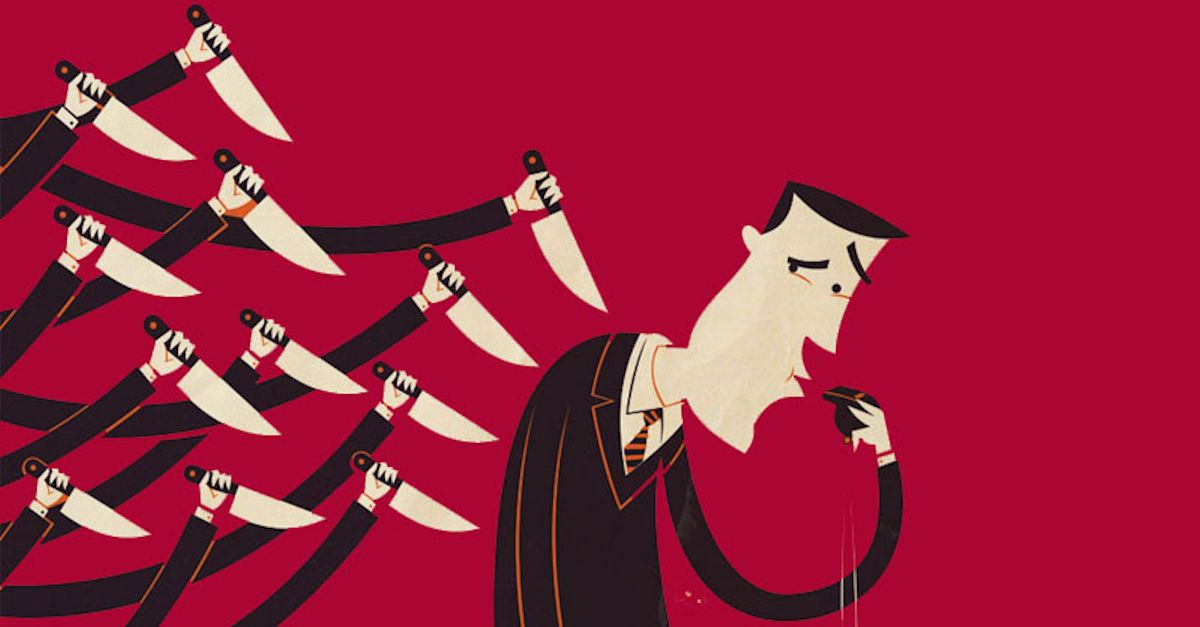

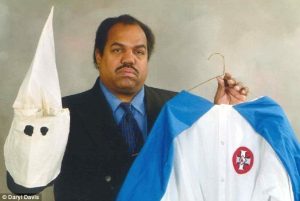 By Rick Hutchins
By Rick Hutchins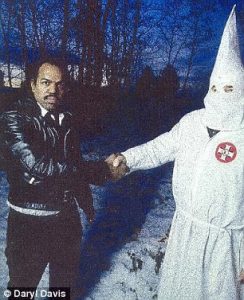 bachelor’s degree in music and who has performed with artists such as Chuck Berry and Jerry Lee Lewis (to say nothing of his own band), is a Black man who was a child during the Civil Rights Era. He experienced firsthand the harsh reality of that struggle when he became the first Black member of a local Cub Scout troop in Massachusetts. But his innate intellectual curiosity combined with his benevolent disposition to form a most unique reaction to the problem of racism.
bachelor’s degree in music and who has performed with artists such as Chuck Berry and Jerry Lee Lewis (to say nothing of his own band), is a Black man who was a child during the Civil Rights Era. He experienced firsthand the harsh reality of that struggle when he became the first Black member of a local Cub Scout troop in Massachusetts. But his innate intellectual curiosity combined with his benevolent disposition to form a most unique reaction to the problem of racism.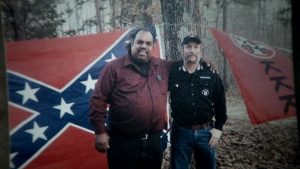 Davis is currently in possession of more than two dozen KKK robes, given to him by former Klansman who have abandoned their ideology, disarmed by the mere existence of this good-natured peacemaker. Among those who have foresworn White supremacy in favor of a Black friend is Roger Kelly, former Imperial Wizard of the Maryland KKK. Kelly later invited Davis to be his daughter’s godfather.
Davis is currently in possession of more than two dozen KKK robes, given to him by former Klansman who have abandoned their ideology, disarmed by the mere existence of this good-natured peacemaker. Among those who have foresworn White supremacy in favor of a Black friend is Roger Kelly, former Imperial Wizard of the Maryland KKK. Kelly later invited Davis to be his daughter’s godfather.


